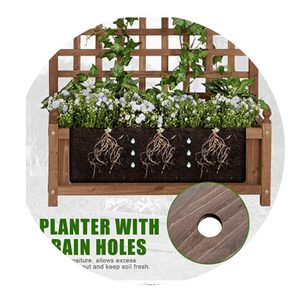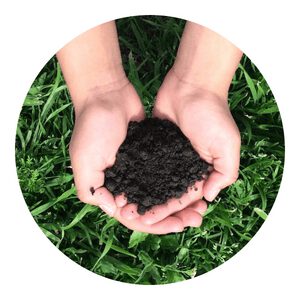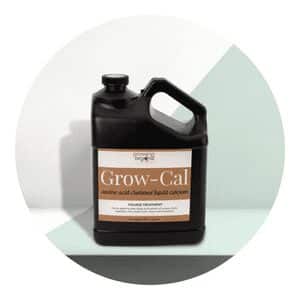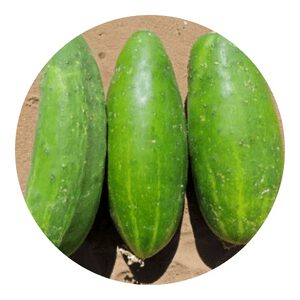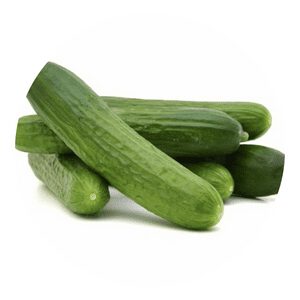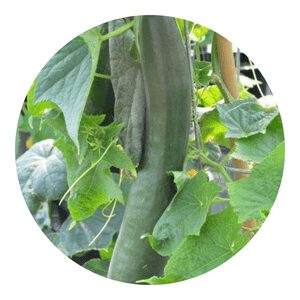How to grow Carolina Cucumber
Carolina cucumbers are a type of cucumber native to the United States and one of the most popular types of cucumber grown in home gardens.
Growing Carolina cucumbers at home can provide an abundance of fresh produce for salads, sandwiches, and other recipes.
But growing these cukes takes time, effort, and knowledge.
In this article, we’ll cover the basics of how to grow Carolina cucumbers from planting to harvest.
Carolina Cucumber Menu
The characteristics of Carolina cucumbers
Carolina cucumbers are a type of cucumber that has been gaining popularity among home gardeners in recent years.
With their unique flavor and texture, these cucumbers are an excellent addition to any garden or kitchen table.
Carolina cucumbers have a sweet taste and mild crunch. They can range from light green to dark green in color, with smooth skin and curved shape.
When sliced, Carolina cucumbers feature small seeds that give them a unique look on salads or sandwiches.
The flesh of the cucumber is firm but juicy, making it perfect for pickling or adding to recipes.
For gardeners looking for something special in their backyard gardens, Carolina cucumbers are an ideal choice with their delicious flavor and beautiful appearance.
They are easy to grow, requiring minimal maintenance while providing abundant yields when harvested at just the right time!
Choosing the right location
Every gardener knows that choosing the right location is essential to successful crop growth.
When it comes to Carolina cucumbers, selecting a sunny spot in your garden with nutrient-rich soil is key for maximum yield and quality.
Carolina cucumbers need full sun at least 8 hours a day, so finding an area of your garden that gets plenty of sunlight should be the first priority when deciding where you’re going to plant them.
The soil in this area should also be well drained and loose — think sandy or loam type soil — as this will help ensure good water infiltration and root development.
Adding compost or aged manure can provide extra nutrients to get the cucumber plants off to a strong start.
With its long growing season, Carolina cucumbers require consistent care throughout the summer months, so making sure you choose the right location is paramount for success!
Planting your seeds
Growers in the Carolinas have long enjoyed the delicious and nutritious treats that Carolina cucumbers have to offer.
In order to get a successful harvest of these crisp, flavorful veggies, it’s important to know how and when to plant them.
Here are the steps for planting Carolina cucumber seeds:
If you live in an area with a relatively mild climate, you can directly sow your cucumber seeds into the ground when all danger of frost has passed.
Make sure that your soil is well-draining before planting; if not, mix in some compost or other organic matter prior to sowing your seeds.
Plant each seed approximately 1 inch deep and 3 inches apart.
Caring for your plants
Caring for your Carolina cucumber plants is essential to ensure a healthy, plentiful harvest.
Carolina cucumbers need consistent watering and fertilizing throughout the growing season. They also require protection from pests and disease.
Regular inspections of the plant’s leaves and stems are necessary to detect any damage or infestations in its early stages.
Carolina cucumber plants should be watered at least twice per week, if not more depending on soil type and weather conditions.
Fertilizer can be applied every 2-4 weeks during the growing season using an all-purpose liquid fertilizer with balanced nitrogen, phosphorus, and potassium levels.
Pests that may damage Carolina cucumbers include aphids, squash bugs, mites, flea beetles, and cucumber beetle larvae; these can be controlled by using insecticides or natural remedies such as neem oil or insecticidal soap spray.
A crunchy delight in a garden bed, Grow Carolina Cucumber and eat it with spread. It will be better than all of the rest Enjoying its flavor like no other test. Cool and refreshing in your summer dish, It's so famous, why should we wish? Tempting and sweet it's the only way, The perfect snack on any given day!
Chappy The Gardener
The benefits of trellising your Carolina cucumber plants
Trellising is an important technique for growing Carolina cucumbers, as it provides numerous benefits that can help ensure a successful harvest.
When grown correctly with the use of trellises, Carolina cucumbers have improved air circulation and are easier to harvest due to their height off the ground.
Trellising also helps keep foliage from spreading over soil surfaces, inhibiting disease and pest infestations.
To get started on your own trellised cucumber patch, here are some tips on how to properly grow Carolina cucumbers using this method.
First, secure two posts in the ground at least three feet apart where you plan to grow your cucumbers.
Then place a sturdy trellis structure between them – make sure it’s tall enough so that your plants won’t outgrow it!
Best organic fertilizers for cucumber plants
Organic fertilizers are a great way to nourish and promote healthy growth in cucumber plants.
These fertilizers are derived from natural sources and are free from synthetic chemicals, making them a safe and environmentally friendly option.
Here are some of the best organic fertilizers for cucumber plants:
- Compost: Compost is a type of organic matter that is rich in nutrients and beneficial microorganisms. It is made by decomposing plant and animal materials, and can be used to fertilize cucumber plants by adding it to the soil around the base of the plant.
- Animal manure: Cow, horse, and chicken manure are all great sources of organic fertilizer for cucumber plants. These manures contain a range of nutrients, including nitrogen, phosphorus, and potassium, which are essential for healthy plant growth.
- Bone meal: Bone meal is a fine powder made from ground animal bones and is a great source of phosphorus, which is essential for root growth and fruit development in cucumber plants.
- Fish emulsion: Fish emulsion is a liquid fertilizer made from ground up fish and fish parts. It is high in nitrogen and other nutrients, making it a great choice for fertilizing cucumber plants.
- Seaweed extract: Seaweed extract is a liquid fertilizer made from seaweed and is a great source of micronutrients that can help improve the overall health of cucumber plants.
- Earthworm castings: Earthworm castings are a type of organic matter that is produced by earthworms as they digest organic matter. These castings are rich in nutrients and beneficial microbes, making them a great fertilizer for cucumber plants.
When using organic fertilizers, it is important to follow the recommended application rates and to use them in conjunction with good soil preparation and proper watering techniques.
This will help ensure that your cucumber plants have all the nutrients they need to thrive.
Harvesting
Harvesting is a key step in the process of growing Carolina cucumbers.
To determine when your cucumbers are ready for harvesting, look for dark green fruits that are at least six inches long.
Cucumbers can be harvested as soon as they reach this size, however, it is best to wait until they reach eight inches for the full flavor and nutritional value.
When ready to harvest, use scissors or pruning shears to cut the stem about one inch above the fruit.
Make sure not to pull on the cucumber so as not to damage either it or its neighboring plants.
After harvesting, rinse each cucumber under cold water and store them in a plastic bag in your refrigerator for up to two weeks.
Companion planting
Carolina cucumbers are popular vegetables that are easy to grow in home gardens and can be used in a variety of recipes.
But did you know that companion planting can help maximize the health and yield of this delicious vegetable?
Companion planting is the practice of growing complementary plants together to improve their overall health and production.
When it comes to Carolina cucumbers, some of the most beneficial companion plants include basil, catnip, oregano, marigolds, parsley, nasturtiums and nettles.
Basil helps repel certain insects that feed on cucumber leaves while catnip acts as a natural insect repellent for aphids and ants.
Oregano contains antimicrobial properties which can help reduce plant diseases that affect cucumber growth.
Common diseases that can affect Carolina cucumber plants
Carolina cucumbers are a highly sought-after summertime vegetable, and effective pest control is essential to ensure healthy, bountiful crops.
Aphids, squash bugs, and cucumber beetles can all cause significant damage if left unchecked.
However, with the right preventative measures in place, controlling these pests can be relatively easy.
To start off with prevention: keep weeds away from Carolina cucumber plants as they provide an ideal habitat for pests.
Keep garden debris cleared away to reduce the risk of attracting pests.
Additionally, practice crop rotation each season; this will help break up pest cycles and reduce the chances of re-infestation.
To address an existing infestation: use insecticidal soaps or oils to treat aphids; remove squash bug eggs from leaves manually; or use row covers or outdoor traps to trap cucumber beetles before they reach your plants.
Common problems and solutions
Growing Carolina cucumbers can be an exciting experience, but it is not without its challenges.
When growing these cucumbers, there are a few common problems to look out for; poor fruit production, yellowing of leaves and flowers, as well as pest infestations.
Poor fruit production can be caused by inadequate soil fertility or lack of pollinator activity in the garden.
To increase fruit production, ensure that you are providing the plants with adequate water and nutrients.
Additionally, attract pollinators to the garden with plants such as marigolds or cosmos to help achieve maximum yield potential.
Yellowing of leaves and flowers could be indicative of nutrient deficiency or too much moisture in the soil.
A soil test is a great way to determine what nutrients may need adjustment in order for optimal growth and health of your cucumbers.
Tips for success
Growing Carolina cucumbers can be a rewarding and delicious experience.
With the right variety, some helpful tools, and a bit of know-how, you can successfully grow your own cucumbers.
Here are some tips to help you grow the perfect Carolina cucumber crop:
First, it’s important to choose the right variety for your climate.
Cucumbers are sensitive to temperature changes so pick one that will thrive in your area.
Next, make sure you select an appropriate site with plenty of sun and good drainage.
You should also consider using mulch around the plants to retain moisture in hot climates or protect them from frost in colder areas.
Additionally, it is important to regularly fertilize and water your cucumber plants – keep them evenly moist but not soggy for best results!
How To Grow Carolina Cucumber Hydroponically
Hydroponic gardening is a method of growing plants without soil, using nutrient-enriched water instead.
Follow these simple steps to grow Carolina Cucumbers hydroponically:
First, choose containers that are deep and wide enough to accommodate the roots of the plant.
Ensure that each container has good drainage holes and place it near an area that receives plenty of natural light.
Fill the container with an appropriate hydroponic growth medium such as gravel or vermiculite, and moisten it thoroughly before planting your seedlings.
How To Grow Carolina Cucumber in a Raised Beds
Growing Carolina cucumbers can be a rewarding experience for the home gardener.
Homegrown cucumbers are much tastier than store-bought varieties and provide the satisfaction of knowing you grew them yourself.
If you have limited space, consider growing your cucumbers in raised beds. Here’s how to get started:
Before planting your cucumber seedlings, it is important to prepare the soil properly by adding plenty of compost or well-rotted manure.
This will ensure that your plants receive all the nutrients they need for optimal growth and production.
Place the seedlings in holes about six inches deep and two feet apart, making sure you water them thoroughly after planting.
You should also mulch around each plant with a thick layer of straw or grass clippings to help retain moisture throughout their growing season.
Recipes
Carolina cucumbers are a unique type of cucumber native to the Southeastern United States.
These cucumbers are known for their mild flavor and crunchy texture, making them an ideal addition to salads, sandwiches and even drinks!
If you are looking for ways to use Carolina cucumbers in your cooking, here are some recipe ideas that will have your taste buds tingling.
Start with a simple salad by slicing up some Carolina cucumbers and adding them to a bed of lettuce along with tomatoes, onions and croutons.
Or top off your favorite sandwich with creamy slices of this delicious vegetable.
For a refreshing drink on hot summer days, try blending together some freshly cut Carolina cucumber with mint leaves or other herbs and serve over ice.
No matter what recipe you choose, Carolina cucumbers will add a burst of flavor to any dish.
In conclusion,growing Carolina cucumbers is a great way to add variety and flavor to your garden.
They are easy to grow and require minimal effort from the gardener, making them an ideal choice for novice gardeners as well as experienced ones.
With its sweet flavor, tender texture, and crispness, it is no wonder why the Carolina cucumber has become so popular.
This delicious and nutritious vegetable can be enjoyed in salads, sandwiches, relish trays, pickles and more.
Click To Grow
Helps Us Grow – Share If You Like





